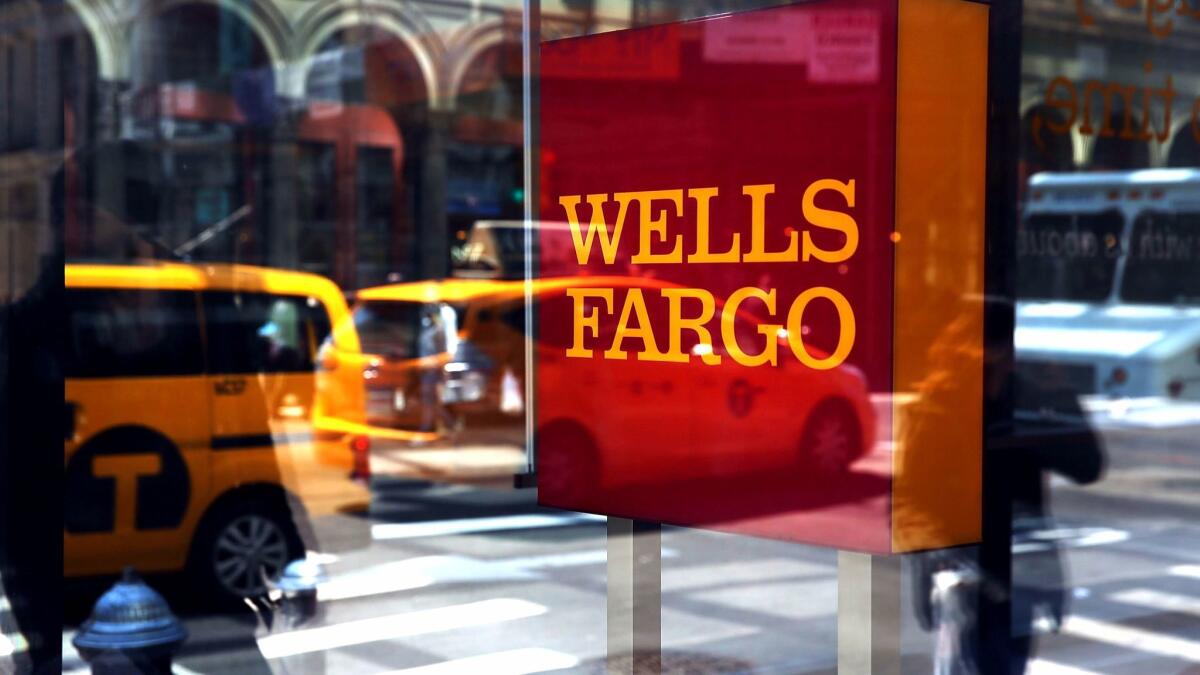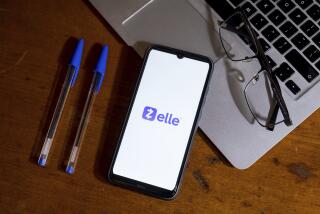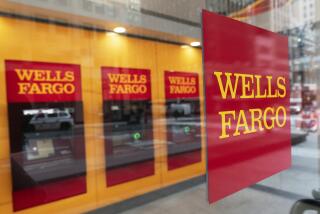Want a piece of the $110-million Wells Fargo settlement? Here’s what you need to know

- Share via
Wells Fargo & Co. this week agreed to pay $110 million to settle a class-action lawsuit over the bank’s creation of as many as 2 million accounts that customers didn’t authorize.
If a judge approves the deal, most of that money will be sent to customers affected by the bank’s practices.
So how much might an individual customer get? And what happens next? Here is what we know so far.
What do I need to do to make sure I get some of the settlement money?
For now, nothing.
Before anything else happens, the settlement must get the preliminary approval of a federal judge in San Francisco. Wells Fargo and the attorneys who filed the case will submit a settlement plan to the judge next month. The plan will explain who will be eligible for the settlement and how they will be contacted.
Wells Fargo has identified about 2.1 million accounts that might have been unauthorized, and it has paid refunds of fees paid on about 130,000 unauthorized accounts. Customers who have received those refunds — the bank hasn’t disclosed how many that is — will probably receive notices in the mail. (The settlement is separate from the bank’s pledge to refund fees, so customers who received refunds will be still be eligible to participate in the settlement.)
To reach customers who might have been affected but haven’t yet been identified, a settlement administrator might place advertisements in newspapers and elsewhere, asking customers to come forward.
How much might I get?
We don’t know yet, but we should have a better idea next month. Part of the settlement plan is an estimate of potential payouts.
Don’t expect big payments. For starters, customers won’t be splitting $110 million. The lawyers who brought the case could get as much as 25% of that — or $27.5 million — leaving $82.5 million for customers.
The estimated 2.1 million unauthorized accounts were created between 2011 and last year. But the settlement applies to accounts created as early as 2009, so the number of potentially unauthorized accounts could be higher.
If the settlement money were evenly split between 2.1 million accounts — the actual plan is a little more complicated — that would work out to a little less than $40 per account.
Many customers say the bank opened several unauthorized accounts for them, so some people could get more. In a statement, Wells Fargo said settlement funds would be distributed based in part on “the number and kinds of unauthorized accounts.”
What happens next?
The bank and plaintiffs’ attorneys will submit their settlement plan to U.S. District Court Judge Vince Chhabria by April 20.
Other attorneys, ones who filed class-action suits of their own against the bank over unauthorized accounts, will likely object to the deal. Lawyers in some cases told The Times this week that they believe the deal is premature and far too small. A preliminary approval hearing will be held May 18 in San Francisco.
Chhabria could OK the deal — essentially saying it looks fair and reasonable — or reject it, in which case the parties could renegotiate or continue fighting in court. If he approves the deal, it would start a months-long process of finding and notifying affected customers.
Customers who don’t like the deal can formally object by writing a letter to the court. Instructions for objecting should be included in the notices customers receive.
Later, Chhabria would have to give final approval before payments would start going out to customers.
Follow me: @jrkoren
ALSO
Wells Fargo cuts pay for CEO and other top executives after scandal
Two Southern California executives out at Wells Fargo amid stream of departures
More to Read
Inside the business of entertainment
The Wide Shot brings you news, analysis and insights on everything from streaming wars to production — and what it all means for the future.
You may occasionally receive promotional content from the Los Angeles Times.











